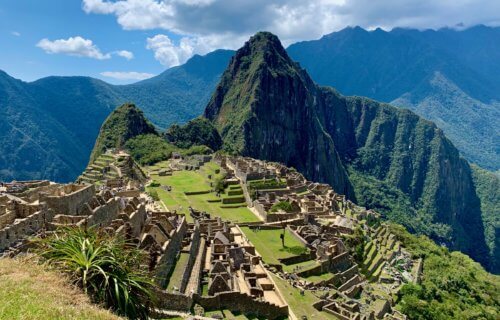NEW HAVEN, Conn. — Machu Picchu is one of the most famous historical sites in the world. The ancient stone palace sitting in the Andes Mountains of Peru dates back to the 15th century. However, a new study by Yale archaeologist Richard Burger finds this giant complex of the Incan Empire may be even older than historians think.
Using an advanced form of radiocarbon dating called accelerator mass spectrometry (AMS), researchers have discovered that Machu Picchu is likely several decades older than historical records show. Until now, historians have believed that Inca Emperor Pachacuti had the massive site constructed after conquering the lower Urubamba Valley around 1438 A.D.
Records dating back to the Spanish invasion have led scholars to conclude that the Incas built the mountain palace some time after Pachacuti seized power; possibly in 1440 or as late as 1450. However, the AMS scans are now rewriting the timeline of the Inca Empire.
Study authors examined the remains of human bodies recovered from the site in the early 1900s. Although current records point to Machu Picchu being Pachacuti’s palace from 1440 to 1530, the radiocarbon dating shows these bodies are at least 20 years older than that.
“Until now, estimates of Machu Picchu’s antiquity and the length of its occupation were based on contradictory historical accounts written by Spaniards in the period following the Spanish conquest,” says Burger, the Charles J. MacCurdy Professor of Anthropology in Yale’s Faculty of Arts and Sciences, in a university release. “This is the first study based on scientific evidence to provide an estimate for the founding of Machu Picchu and the length of its occupation, giving us a clearer picture of the site’s origins and history.”
Rewriting Incan history
Study authors say Pachacuti’s reign paved the way for the Incas to become pre-Columbian America’s most powerful empire. However, the new findings reveal this period started many years earlier than the records show.
“The results suggest that the discussion of the development of the Inca empire based primarily on colonial records needs revision,” Burger says. “Modern radiocarbon methods provide a better foundation than the historical records for understanding Inca chronology.”
Researchers say these remains likely belong to attendants who served the emperor at Machu Picchu. AMS scans revealed that the remains of these individuals did not show any of the wear and tear scientists would expect to see on the bones of construction workers or those doing heavy labor at the mountain site. In total, study authors examined the teeth and bones of 26 people discovered at the palace by Yale professor Hiram Bingham III in 1912.
The findings appear in the journal Antiquity.
